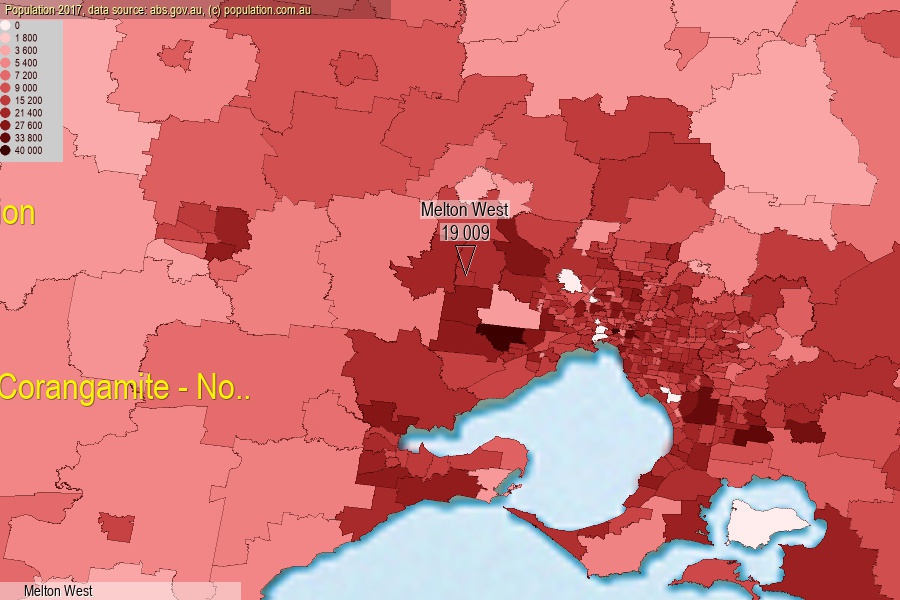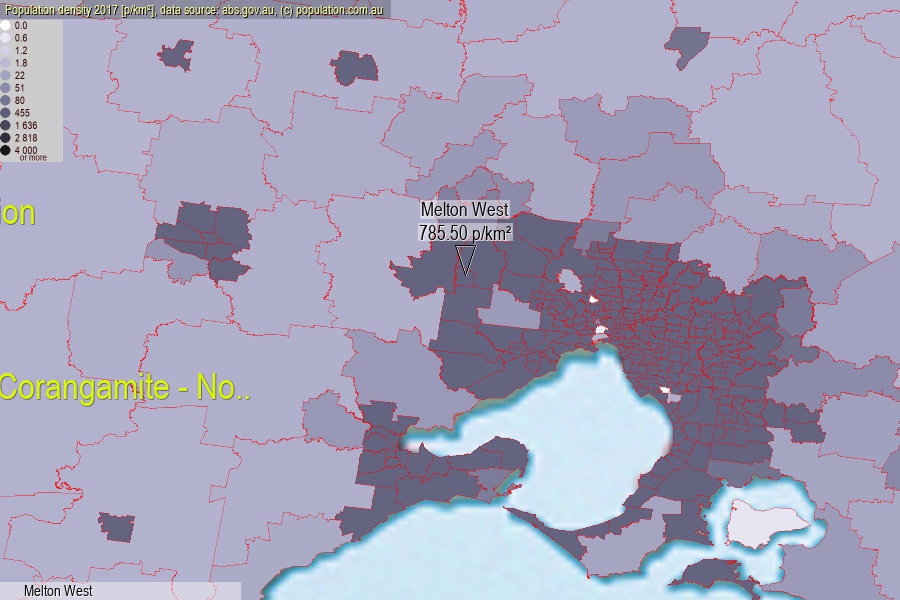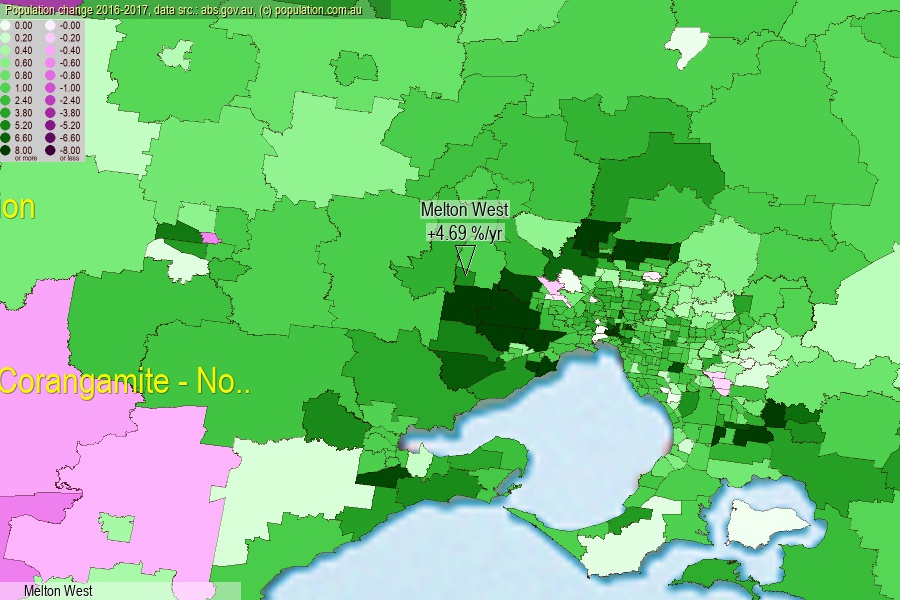 population.com.au
population.com.auLast official estimated population of Melton West (as Statistical Area Level 2) was 19 009 people (on 2017-06-30)[2]. This was 0.08% of total Australian population and 0.296% of VIC population. Area of Melton West is 24.20 km², in this year population density was 785.50 p/km² . If population growth rate would be same as in period 2016-2017 (+4.69%/yr), Melton West population in 2025 would be 27 433. [0]



Click to enlarge. Melton West is located in the center of the images.
Population [people], population density [p./km²] and population change [%/year] [2]
View borders » (new window) [4]
[1991-1992] +5.62 %/Yr.
[1992-1993] +4.45 %/Yr.
[1993-1994] +3.85 %/Yr.
[1994-1995] +2.12 %/Yr.
[1995-1996] +2.13 %/Yr.
[1996-1997] -0.42 %/Yr.
[1997-1998] -0.06 %/Yr.
[1998-1999] +0.55 %/Yr.
[1999-2000] +1.01 %/Yr.
[2000-2001] +2.10 %/Yr.
[2001-2002] +2.93 %/Yr.
[2002-2003] +4.17 %/Yr.
[2003-2004] +3.49 %/Yr.
[2004-2005] +6.70 %/Yr.
[2005-2006] +9.11 %/Yr.
[2006-2007] +7.51 %/Yr.
[2007-2008] +6.81 %/Yr.
[2008-2009] +7.05 %/Yr.
[2009-2010] +5.98 %/Yr.
[2010-2011] +5.45 %/Yr.
[2011-2012] +5.66 %/Yr.
[2012-2013] +4.67 %/Yr.
[2013-2014] +4.12 %/Yr.
[2014-2015] +4.03 %/Yr.
[2015-2016] +4.43 %/Yr.
[2016-2017] +4.69 %/Yr.
[0] Calculated with linear interpolation from officially estimated population
[1] Read more about SA2 and Australian Statistical Geography Standard (ASGS) on abs.gov.au
[2] Population data from Australian Bureau of Statistics (Population and density: 2017; change: 2016-2017)
[3] Digital Boundaries: Australian Statistical Geography Standard (ASGS) 2016.
[4] Border coordinates are simplifyed using Ramer-Douglas-Peucker algorithm.